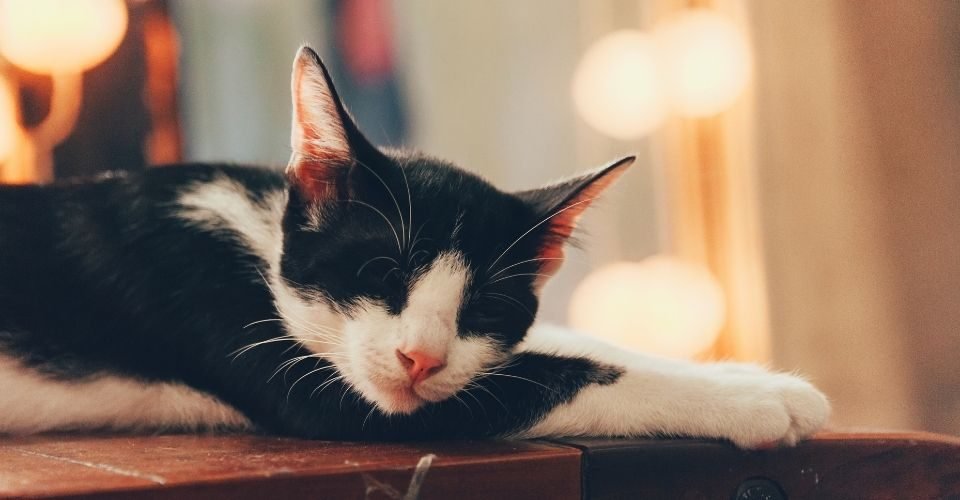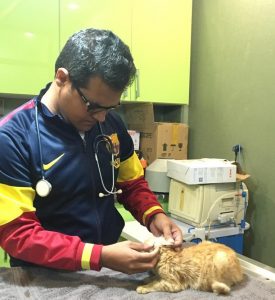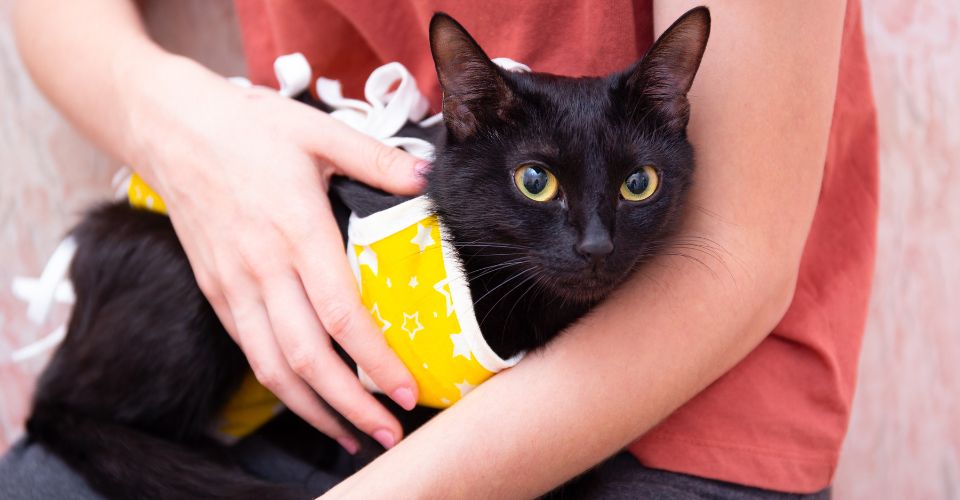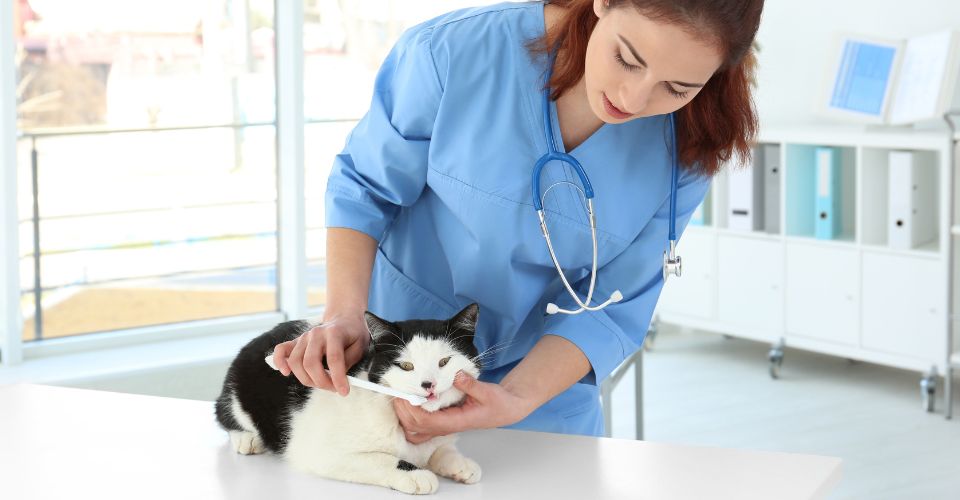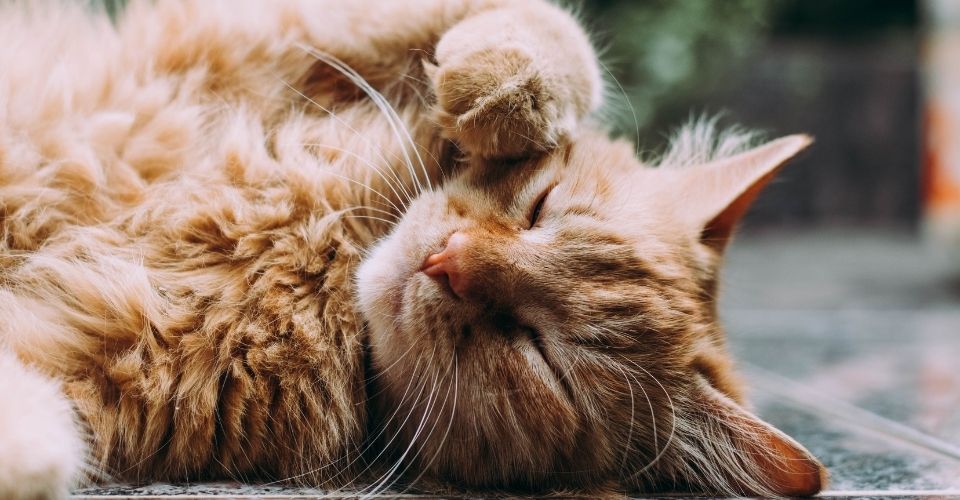A wink from your crush is exciting—hinting she is interested. But a wink from your feline fella could be distressing—tipping you off that there is something wrong with her. Unusual blinking, pawing at and discharge from eyes, and swelling are some of the signs of a cat eye infection.
Amongst all animals, cats have the most sparkling eyes. Felines’ eyes are expressive and often provide their owners with important indicators if they are not feeling well. Fortunately, our cats are not as susceptible to eye problems as their canine counterparts. But unfortunately, when our cats develop an eye disease, it is chronic, and sometimes it becomes a lifelong problem, according to Animal Eye Care. Therefore, it is crucial that as responsible cat owners, we familiarize ourselves with the signs of a cat eye infection, its causes, and treatment.
In this blog, we are going to talk in-depth about cat eye infection: What causes a cat eye infection, what are the symptoms, how to cure and prevent it.
The Anatomy of Cat’s Eye
A cat eye is, anatomically, quite similar to the human eye but some differences make their vision different from ours.
Many people believe that cats are color blind—they see the world in black and white. But it is not the case; a cat’s vision is like a color-blind human. Cats are also better equipped to see in dim light, and with more precision than humans.
To begin with, cats have a higher concentration of light rods in their eyes that help them effectively detect light and motion. Besides the higher number of light rods, cats have a unique material, tapetum lucidum, in their eyes which acts as a mirror and reflects the light passing through their retina. Last but not least, cats have a third eyelid, also known as the nictitating membrane, which protects their eye from potential injuries while roaming around and hunting.
Cat Eye Infection
Has your cat been acting differently? Has she been pawing at her face—eyes, specifically? Do you see any discharge pooling in the corner of her eyes? Or has your cat been squinting and blinking her eyes more than usual?
If you are nodding your head in affirmation to these questions, then chances are that your cat has an eye infection.
Before discussing the signs of a cat eye infection, let’s first discuss its causes.
Causes of Cat Eye Infections
A healthy cat’s eyes are bright and clear.
If your cat’s eyes seem any different, you should get careful and observant of your cat’s behavior. Following are some of the most common reasons for a cat eye infection:
Feline Upper Respiratory Infections
Feline upper respiratory infection is quite similar to the respiratory infections that affect humans and may have symptoms like sneezing, coughing, a runny nose, and in extreme cases a pus-like discharge from the eye. It is caused by viruses, such as feline calicivirus, pneumonitis, herpesvirus, bacteria, and protozoa. Feline upper respiratory infections are more prevalent in young kittens with a weak immune system and cats living under high-stress environments.
Feline Conjunctivitis
Also known as pink eye, feline conjunctivitis is the inflammation of the inside of the cat eyelid and outside of the eyeball. As in humans, this condition is also highly contagious in felines. But you need not worry if you have a canine fella in the house, as it is only passed from cats to cats. In this condition, your cat’s eyes will turn pink, swell, and develop sensitivity to light. If your cat is experiencing troubled breathing, fever, and diarrhea with conjunctivitis, she might have feline infectious peritonitis.
Corneal Disorder
This is the inflammation, ulceration, and injury of the cat’s cornea—the dome-shaped structure covering the front of the eye. In corneal disorder, your cat will be blinking more than usual and there will be cloudiness and tears dripping down her cheeks.
Epiphora
Epiphora is the overproduction of tears from your cat’s eyes. This usually happens due to the blockage of tear ducts, allergies, viral conjunctivitis, and other eye problems.
Keratoconjunctivitis Sicca
Keratoconjunctivitis sicca is the opposite of epiphora. In this situation, there is an extreme lack of tear production and cat eyes go dry, leading to redness and inflammation. If left untreated, the cat may go blind forever.
Signs of Cat Eye Infections
Cats are stoic creatures—they don’t let others get a hint of their vulnerabilities and sickness. Because of this stoic nature of cats, most cat owners fail to identify if their cat has been sick. This is the reason that cat owners are advised to familiarize themselves with the signs of cat sickness.
As far as cat eye infections are concerned, you need to familiarize yourself with the following signs of sickness:
- Pawing or rubbing at eyes
- Redness of the white of the cat eyes
- Unclear eye discharge—yellow or green
- Excessive blinking and winking
- The third eyelid of the cat covering most of the eye
- There may be sneezing and coughing if the eye problem is due to the upper respiratory infections
If your cat is exhibiting the above-mentioned symptoms, you should immediately get her to the vet. Because eye problems in cats are chronic and if left untreated could lead to blindness or worse. Therefore, early diagnosis is imperative.
Diagnosis of a Cat Eye Infection
Because cat eye infections could be the result of many different feline health issues, you must take your cat to the vet without wasting any time. Unless you are a seasoned veterinarian yourself, it is hard to pin down the real cause behind an infection. Even the vet cannot tell the actual cause of cat eye infection without running some tests.
The vet will take a swab from the infected area of your cat’s eye and if a secondary issue is suspected, there might be additional testing to find the underlying problem.
Cat Eye Infection Treatment
Depending on the diagnosis, different cats may be needing a different treatment.
- For feline upper respiratory infections, there will be antibiotics, fluids, and decongestants.
- For conjunctivitis, the vet may prescribe a steroid ointment and if the causative agent is bacteria, it will be treated by antibiotic ointments.
- The treatment of corneal disorder will be different depending on the causes: There might be the use of antibiotic ointment, or drops, which will promote healing. If drops do not make the situation any better, cat eye surgery might be required.
- Epiphora is treated by flushing of blocked tear duct by saline or plain water under anesthesia.
- Dry eyes are dealt with eye drops or ointments, which control the inflammation and helps with pain management.
Now that you know all about cat eye infections, you might be interested in learning about a dog eye infection, if you also have a canine friend.

